Natura Naturans
Michele Ciacciofera
March 21st - May 18th, 2024
Michel Rein, Paris
Installation views
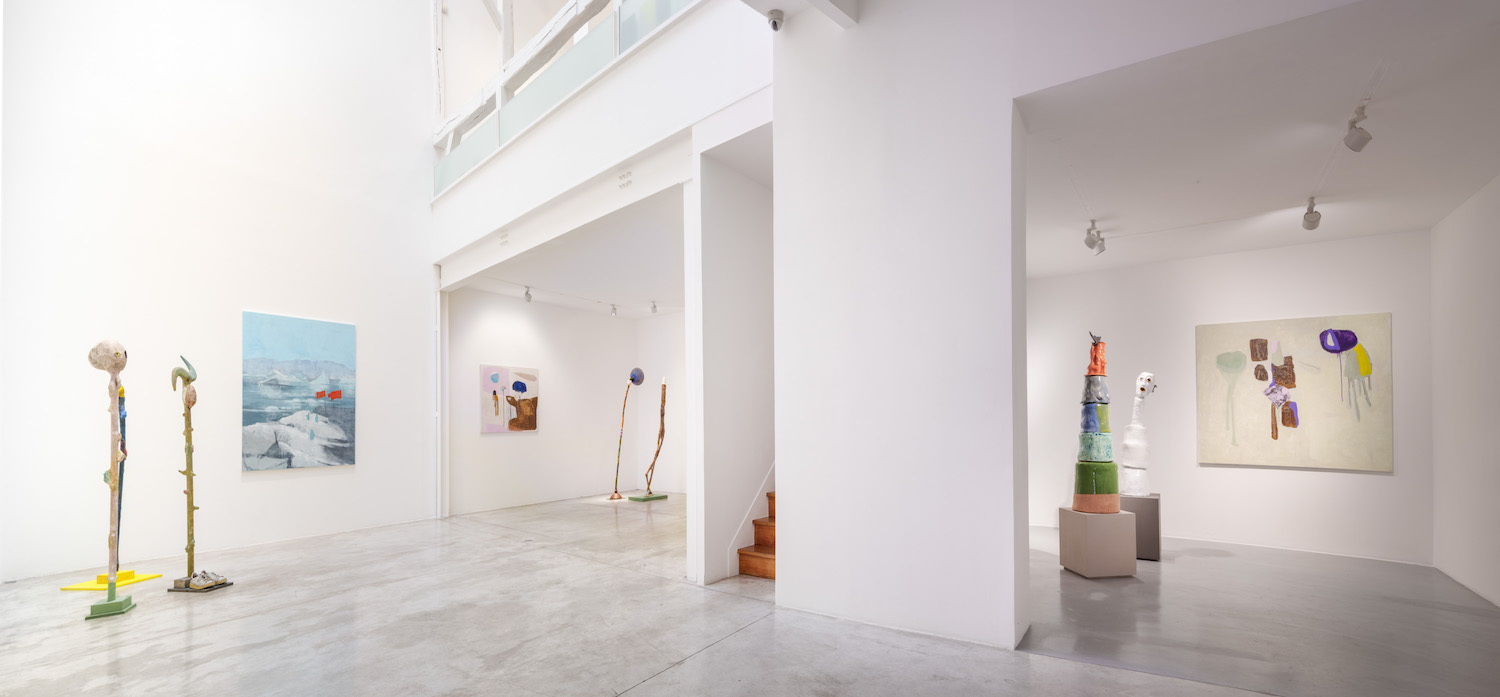
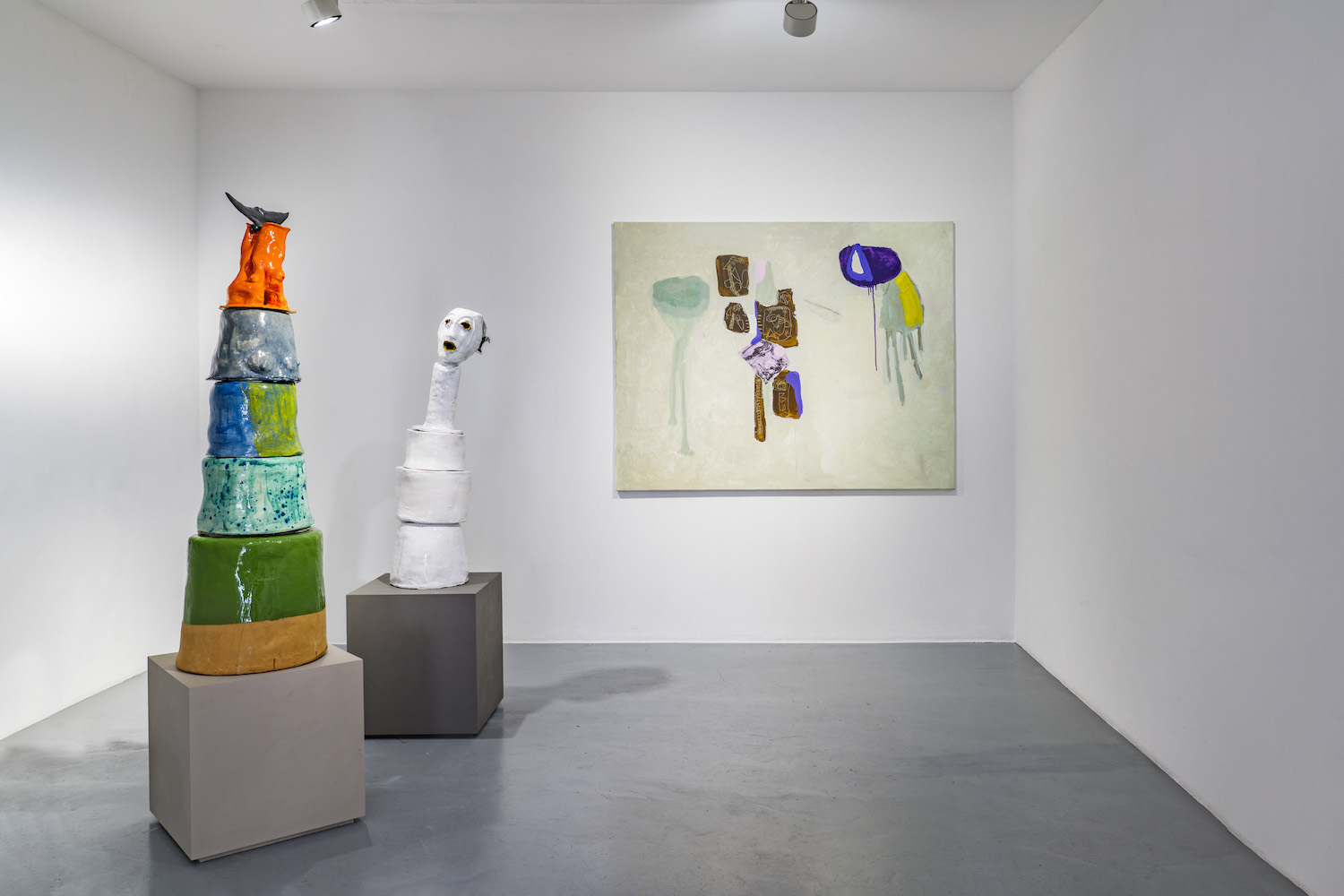
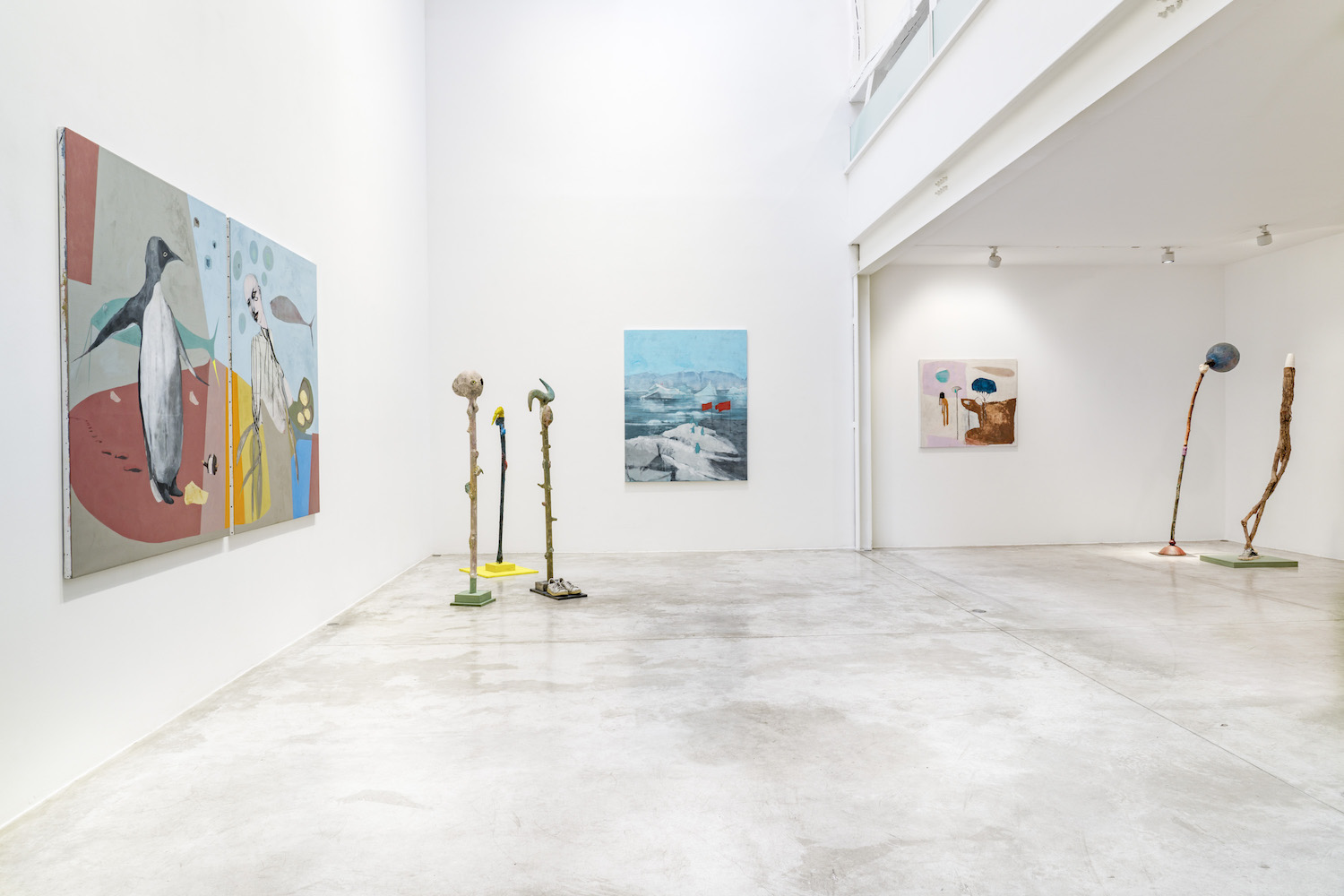
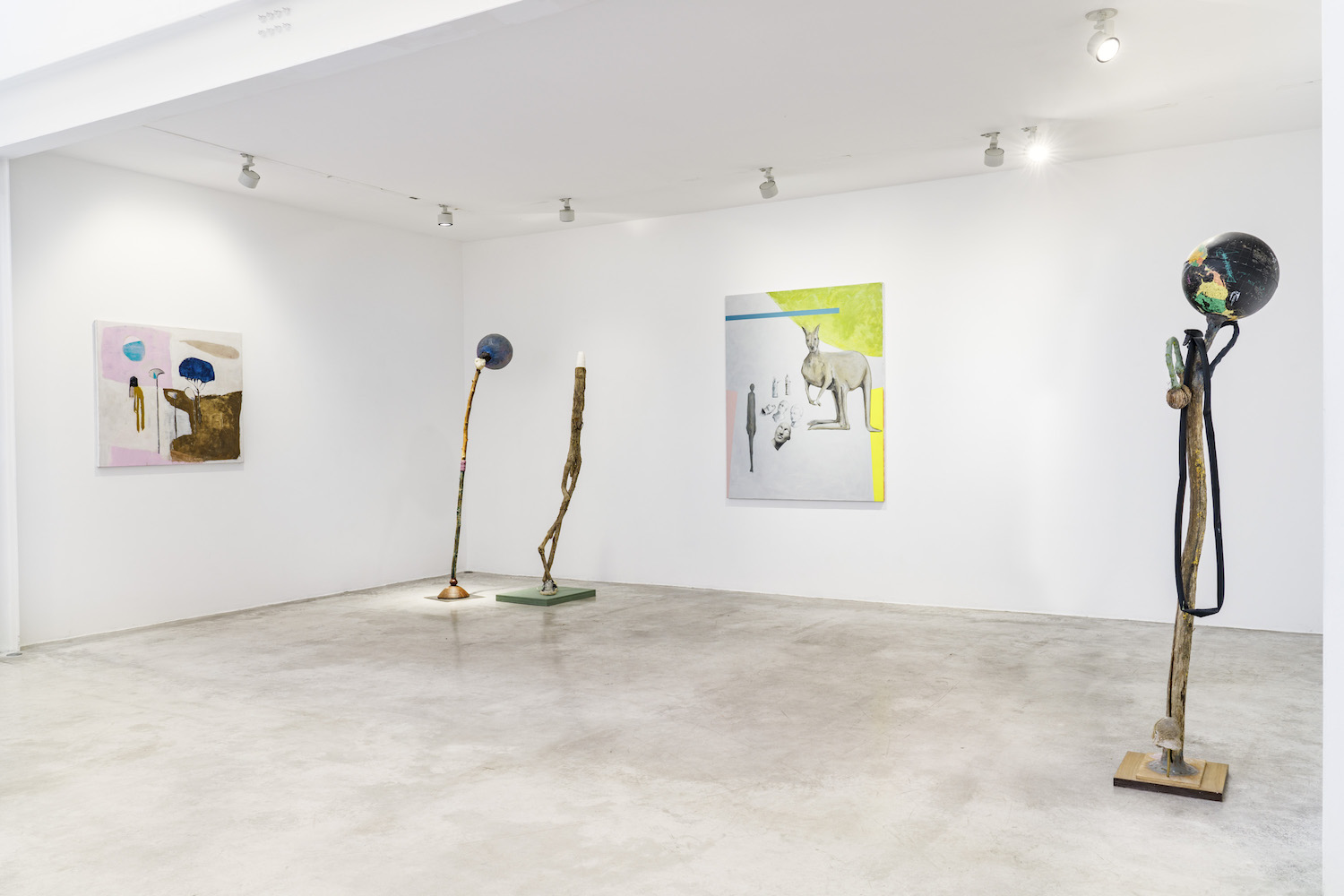
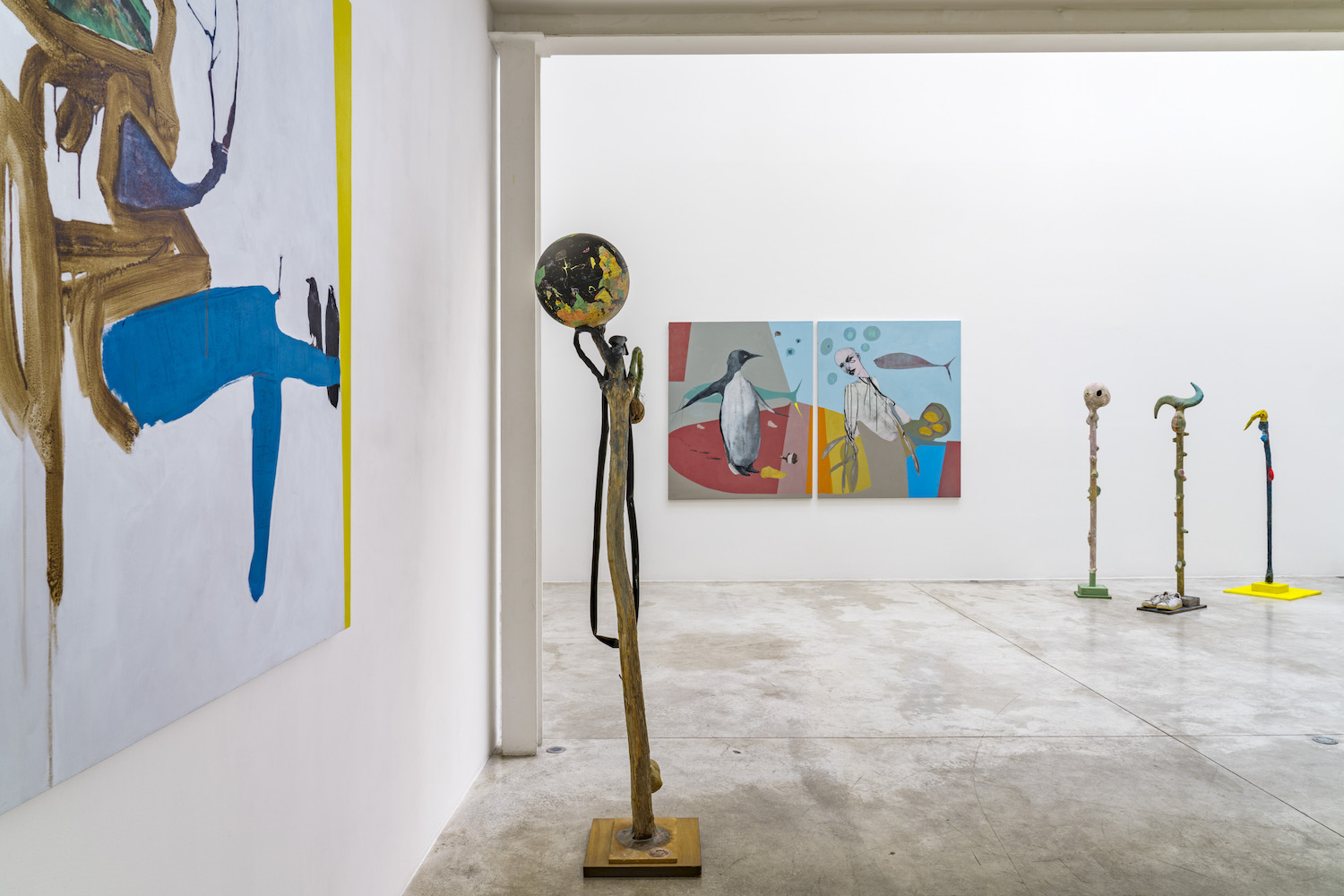
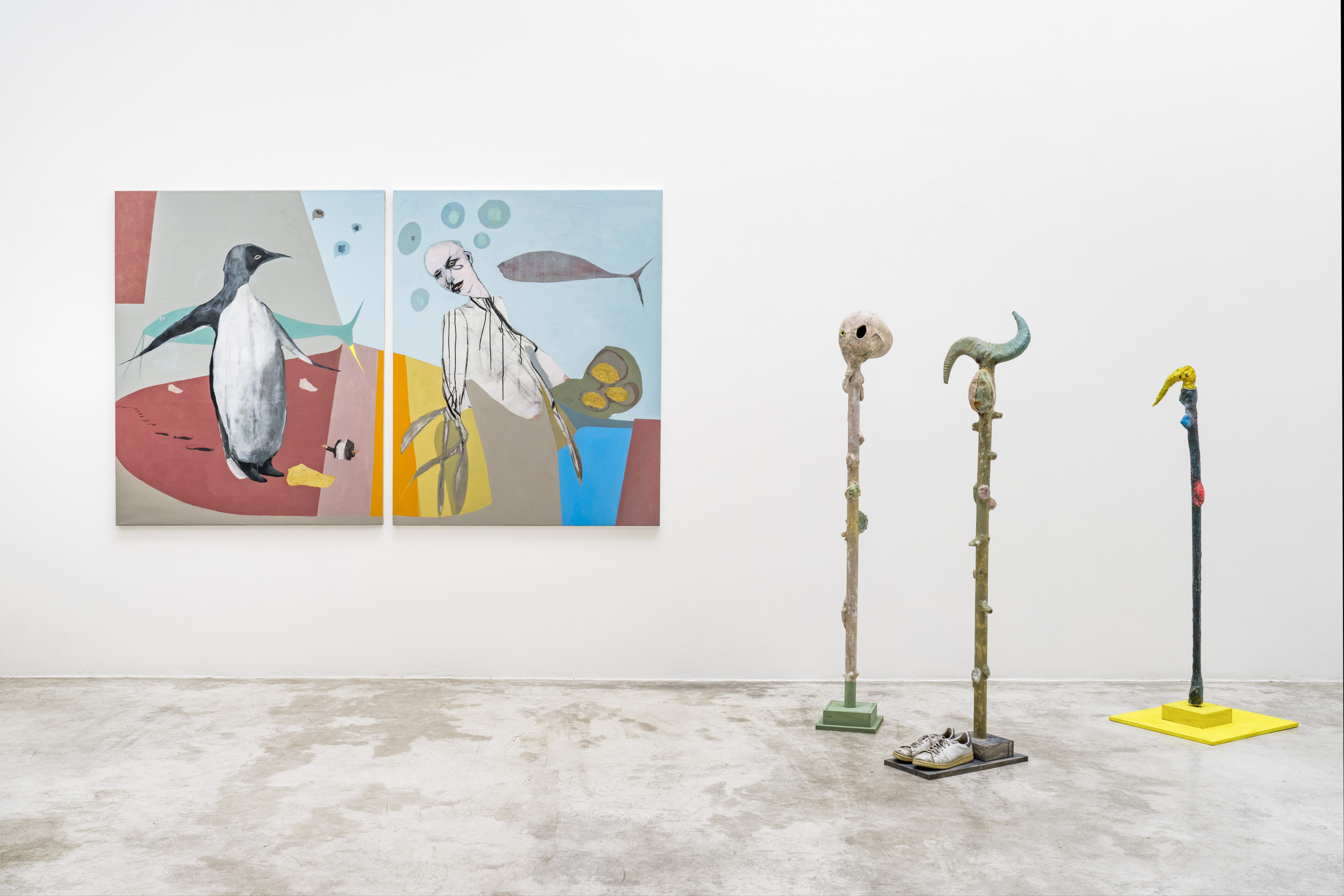
About
The concept, rich and varied in meaning, of Natura naturans, or ‘nature acting’, was originally linked to Aristotle, then to his Arabic commentators such as Averroes, but also to those who translated the latter’s works into Latin.
In the seventeenth century, Baruch Spinoza used the related but opposite terms Natura naturans/Natura naturata to express his concept of absolute immanence, i.e. a ‘naturalism with no external force, no transcendence, a world which has no Gods because it is God’.
Following on from the famous pantheistic philosopher, but also from Giordano Bruno, Schelling and even Paul Klee, this idea of nature as a creative principle now drives and profoundly shapes the work of Michele Ciacciofera.
The imposingly large diptych A change is in the Air is a central piece in the artist’s pictorial approach. Several animal figures, randomly placed in an artificial context, raise the issues of rapid anthropization and of the state of the biomes within which such animals are supposed to evolve. Ciacciofera plays subtly with effects of scale, matt surfaces and mixed materials. He displays both sprezzatura and maestria, in the art of arranging the populated and empty spaces within the picture. The isocephaly between the penguin and a human form, deliberately vague and polysemic, creates tension which showcases the instability of our world and its future. Ciacciofera’s art regularly includes cetaceans and alcids, totemic animals which also hint at the painter as author, and which can be found, specifically, in Antarctic land grab. The Stranger is striking because of the huge kangaroo figure, portrayed like Alberti’s admonitor, which addresses the onlooker and calls on him to become involved in the picture. The figure’s frontal stance and its facial expression can be interpreted in many ways: it seems to be questioning the onlooker as to the state of nature, and more generally as to Man’s relationship with nature. This confrontation with such issues urges the individual to reconsider his or her place vis-à-vis the rest of humanity, but also vis-à-vis all living things. By the use of synecdoche, with the kangaroo embodying a world facing collapse in which biodiversity is being disrupted, the artist brings up all the current difficulties in the relationship between Man and animals, as well as the profound questions relating to climate change.
Ciacciofera has also created several mobiles, hanging here and there in the three-dimensional space of the gallery, and interacting with his canvases. They are the end-product of a complex and patient creative process, bringing to bear a long totemic tradition, but also generating a clever set of references to Mediterranean ecosystems. The inner state, Unconscious growth mechanism and Persistent Vestiges play with the onlooker, with proxemics, and, in particular, cause him to consider weighting conventions and related issues. The same dynamic can be found in the pictures, specifically in The Perfect Balance. By highlighting balance, the artist prompts a far-reaching reflection on the tipping point, the fragility of nature, but also on the probability of the fall, of going past the point of no return.
As a real artifex polytechnes, Michele Ciacciofera makes use of many plastic media and explores the various possibilities offered by his materials, particularly ceramics. Lighea, named after the famous siren of Lampedusa, evokes nature in Sicily, as well as foundational and universal themes such as beauty, death and eroticism. This chimera is a strange paradox: the epitome of a sea creature, yet created by the artist’s skilful use of fire in ceramic art, like an alchemist who transforms matter and sparks a dialogue between the elements. The shocked feminine figure in Do you really believe in … ? – an angelus novus of the environmental crisis and the Anthropocene – draws the attention of the onlooker though her posture and her radiant, spotless whiteness. She is an expression of the perilous condition of humanity, caught in a perpetual rewriting of history and trying to find a response to the crisis of the ecosystems. Inspired by Francesco Laurana’s bust of Eleanor of Aragon, this tormented young woman is racked by existential angst mixed with environmental anxiety.
Maxime Georges Metraux

